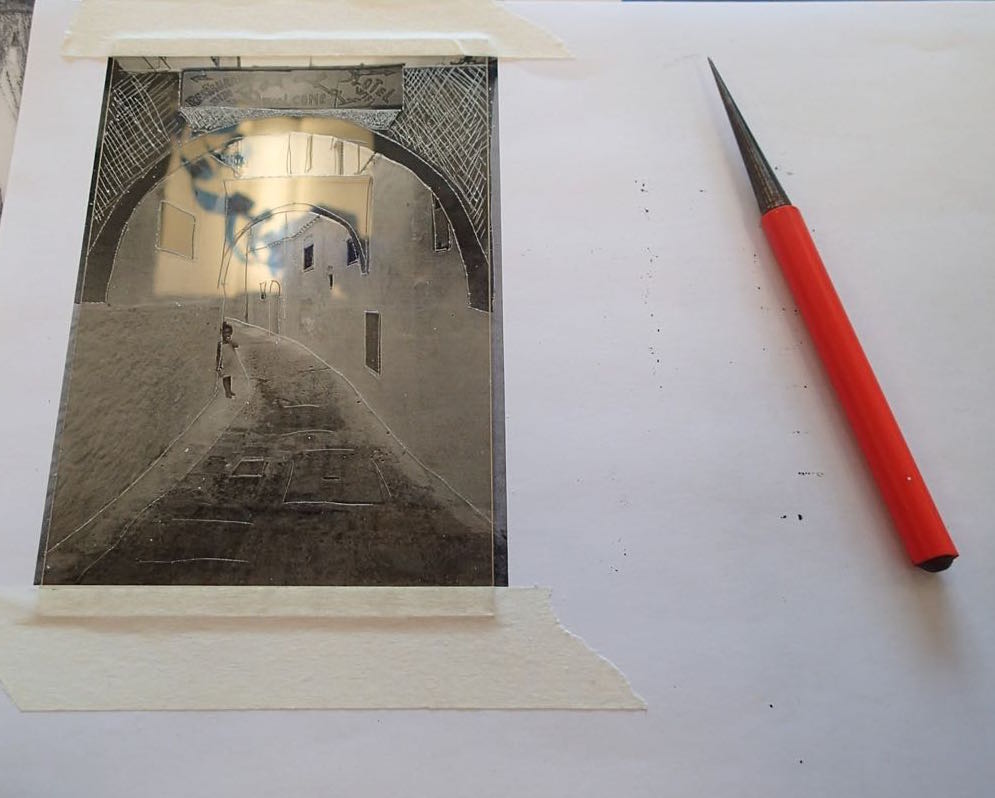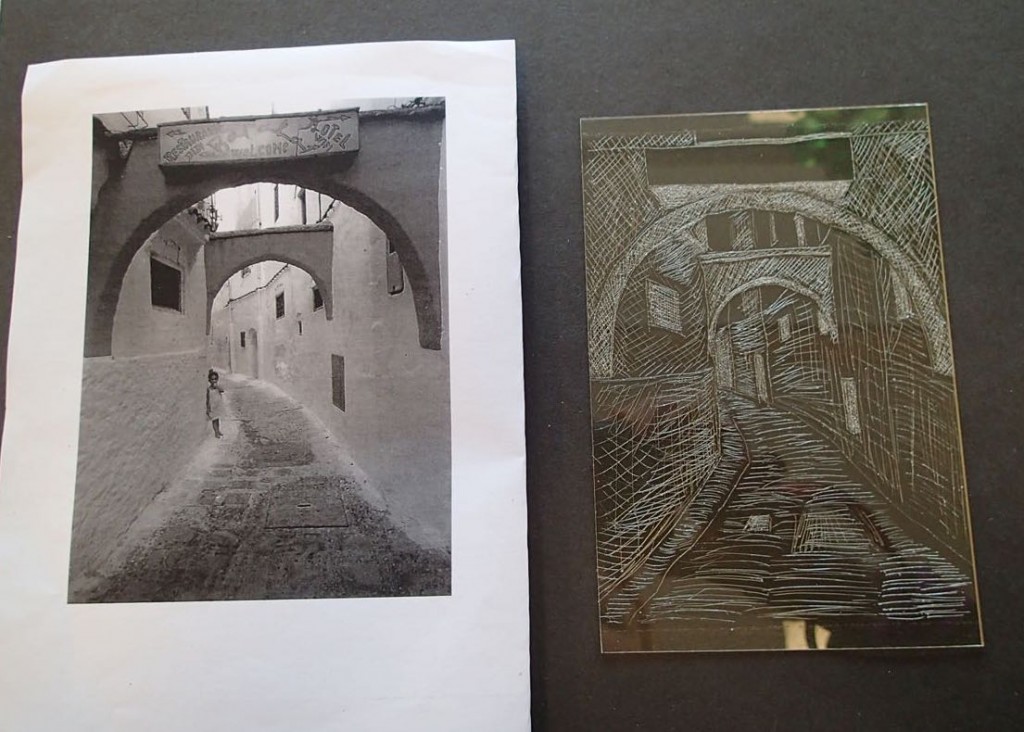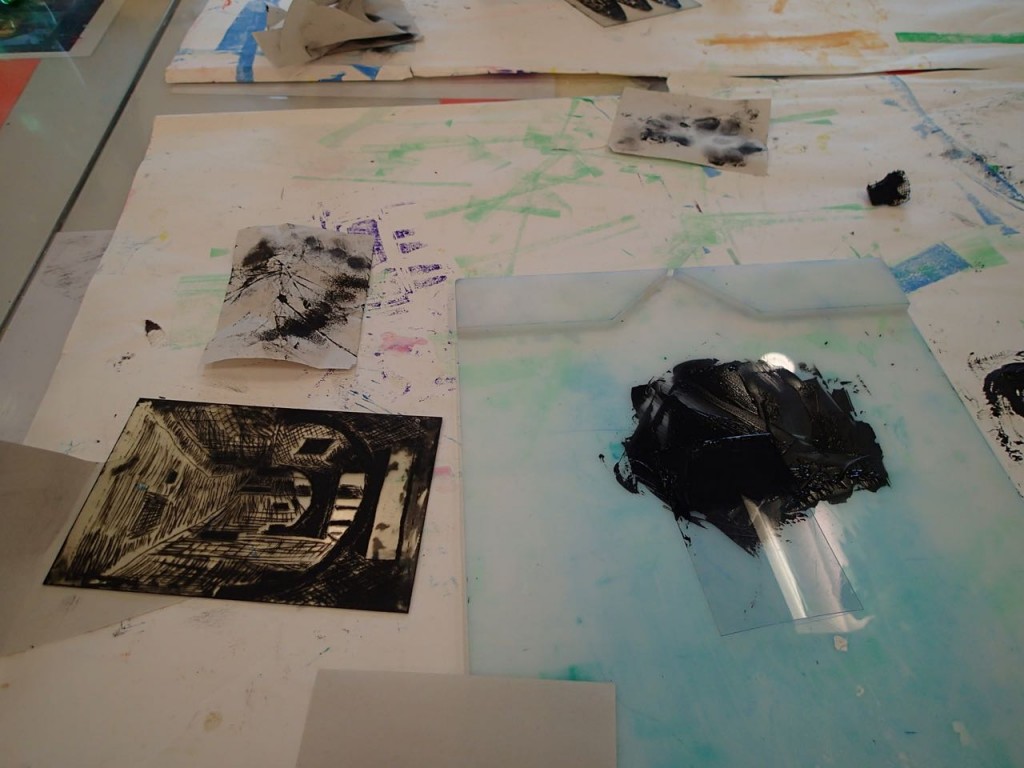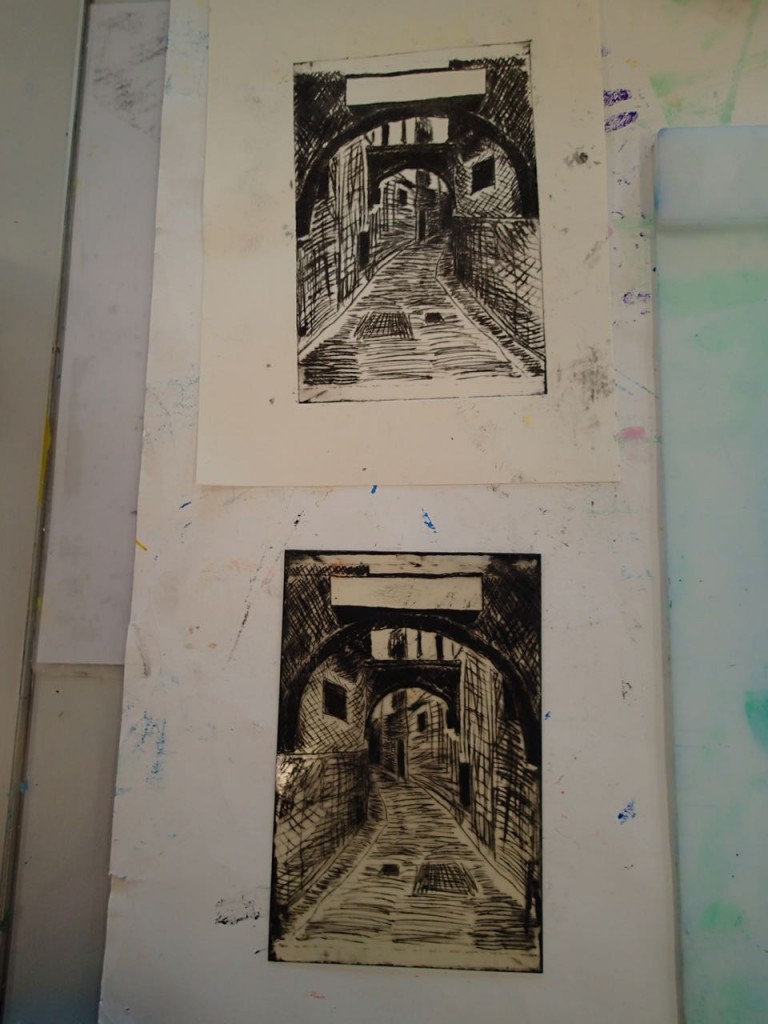I had the chance to take part in a teacher run drypoint printing workshop over the weekend.
Drypoint is a form of intaglio printing whereby lines are incised into a plate, inked and run through a press. We used sheets of clear perspex or plastic for ours with metal styluses. I worked from a print out of a photo from my Morocco trip. Any image with lines, texture or patterns to reproduce will work. The image is taped into place behind the plastic and you incise over the other side. It makes rather a harsh scratchy sound. It’s a linear process using cross-hatching lines. The more lines and closer together they are, the darker that part of the print will come out. Fewer lines, further apart will result in a lighter tone. Some areas can be left totally smooth for a fully light effect.
Once you have finished the etching then you can print. In this printing method, the ink is applied to the plate. You need to press the ink into the grooves that you have made – those are the parts that will be transfered to the paper, the rest will be wiped off.
The ink is rubbed into the plate and the excess rubbed off, first with corse textile, then polished with newsprint paper. You need to wipe with flat fingers in order to polish off all excess ink.
The plate is then run through a printing press.
It was the first time I had done drypoint and would certainly like to try it with students if I had access to a printing press. It has a lot of possibilities for creating texture and expression.







Recent Comments